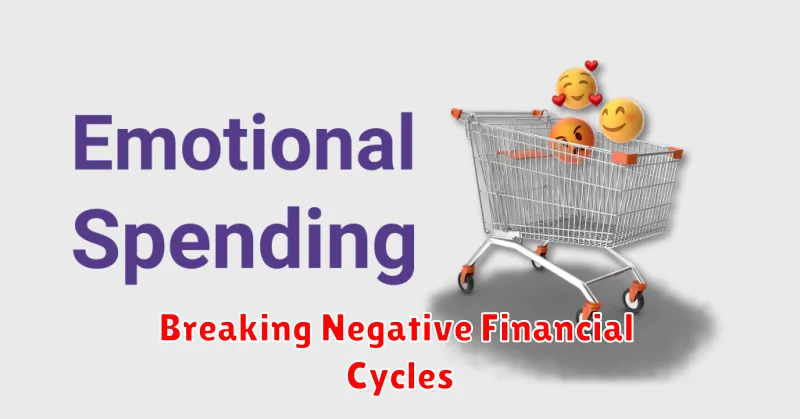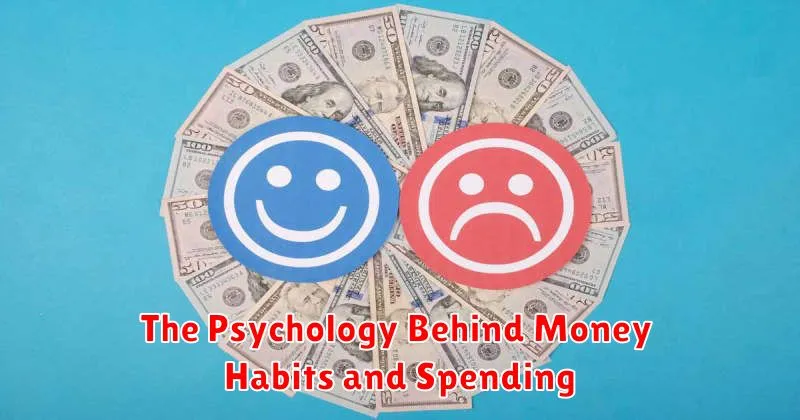Understanding the psychology behind money habits and spending is crucial for achieving financial well-being. This exploration delves into the intricate relationship between our minds and our money, uncovering the psychological factors that influence our spending habits, saving patterns, and overall financial decision-making. By recognizing these underlying influences, we can gain valuable insights into why we handle money the way we do, paving the way for developing healthier money habits and making more informed spending choices. Whether you’re a meticulous budgeter, an impulsive shopper, or somewhere in between, understanding the psychology of spending provides a framework for improving your financial health.
This article will examine various psychological principles related to money, including cognitive biases, emotional influences, and learned behaviors. We will explore how these factors impact our spending habits, from everyday purchases to major investments. By understanding the psychology behind money habits, we can develop strategies to overcome detrimental financial patterns, cultivate positive money management skills, and ultimately achieve greater financial security and peace of mind. Join us as we unravel the complex relationship between the mind and money, and discover how to harness this knowledge to transform your spending habits and build a more secure financial future.
Why We Spend the Way We Do
Our spending habits are influenced by a complex interplay of factors, ranging from basic needs to psychological biases. Meeting essential needs like food, shelter, and clothing constitutes the foundation of our spending. Beyond this, personal values, cultural norms, and individual preferences play a significant role. For example, someone who values experiences might prioritize travel and entertainment, while someone who values security might prioritize saving and investing. Marketing and advertising also exert a powerful influence, shaping desires and creating perceived needs for products and services we may not actually require.
Financial resources naturally dictate the limits of our spending. Income level significantly impacts both the amount we can spend and the choices available to us. Economic conditions also play a role. During periods of economic uncertainty, people tend to be more cautious with their spending, focusing on essentials and reducing discretionary purchases. Conversely, periods of economic prosperity can lead to increased consumer confidence and greater spending across various categories.
Finally, psychological factors like emotional state, social pressure, and cognitive biases impact our spending patterns. Impulse purchases, for instance, are often driven by emotions rather than rational decision-making. Keeping up with the Joneses exemplifies the impact of social comparison on spending, while cognitive biases like the anchoring effect can lead us to overspend based on an initial, often arbitrary, price point. Understanding these various influences can empower individuals to make more conscious and informed spending decisions.
The Impact of Upbringing and Culture
Upbringing and culture are foundational influences shaping an individual’s development and worldview. Upbringing, encompassing parental styles, family dynamics, and early childhood experiences, establishes core values, beliefs, and behavioral patterns. Simultaneously, cultural context, with its traditions, social norms, and shared understandings, further molds an individual’s identity, influencing perceptions of self, others, and the world at large. The interplay of these forces significantly impacts personality, social interactions, and overall life trajectory.
Cultural norms dictate acceptable behavior within a society, influencing everything from communication styles and interpersonal relationships to dietary habits and artistic expression. Upbringing reinforces these norms through learned behaviors and instilled values. For example, a culture that emphasizes collectivism might encourage interdependence and prioritize group harmony, while a culture that values individualism might promote self-reliance and personal achievement. These cultural values are then transmitted and reinforced through family practices and parental guidance within the upbringing.
The combined impact of upbringing and culture creates a complex and nuanced lens through which individuals navigate the world. While these influences are powerful, they are not deterministic. Personal agency and individual experiences also play a significant role in shaping one’s identity. It is the dynamic interaction between these forces that contributes to the rich diversity of human experience.
Emotional Spending Triggers
Emotional spending is driven by feelings rather than logic. It involves purchasing items or services not out of genuine need, but as a response to an emotional state. These states can include stress, sadness, boredom, loneliness, or even excitement and happiness. Understanding your personal emotional triggers is crucial to developing healthier spending habits and achieving financial goals. Ignoring these triggers can lead to overspending, debt accumulation, and regret.
Common emotional triggers can vary greatly from person to person. Some individuals may shop when they’re feeling down as a form of self-soothing, while others might make impulsive purchases when excited or celebrating. Social media, advertising, and peer pressure can also exacerbate emotional spending by creating artificial needs and desires. Identifying your specific triggers requires self-reflection and honesty about your spending patterns.
Developing strategies to manage emotional spending is key to taking control of your finances. This might involve implementing a waiting period before making non-essential purchases, finding alternative coping mechanisms for negative emotions such as exercise or meditation, or creating and sticking to a budget. Seeking support from friends, family, or a financial advisor can also be beneficial in breaking the cycle of emotional spending and establishing more mindful financial habits.
Breaking Negative Financial Cycles

Negative financial cycles can be incredibly challenging to escape. They often start with a triggering event, such as job loss, unexpected medical expenses, or overspending. This event creates a financial shortfall, leading to increased debt and difficulty meeting regular expenses. This can then create stress and anxiety, which can further hinder effective financial management, leading to more debt and deeper entrenchment in the negative cycle.
Breaking these cycles requires a multi-pronged approach. First, identify and acknowledge the root causes of the cycle. Is it impulsive spending, lack of budgeting, or unforeseen circumstances? Honest self-assessment is crucial. Next, create a realistic budget that tracks income and expenses, allowing for identification of areas where spending can be reduced. Prioritize high-interest debt repayment and consider seeking professional financial advice. Finally, cultivate positive financial habits, such as saving regularly, setting financial goals, and actively managing debt.
Remember that breaking a negative financial cycle takes time and consistent effort. Don’t get discouraged by setbacks. Focus on making small, sustainable changes, and celebrate each step of progress. Over time, these positive changes will accumulate, leading to greater financial stability and ultimately, a break from the negative cycle.
Building Mindful Money Habits
Developing mindful money habits is crucial for long-term financial well-being. It involves being aware of your spending and saving patterns, understanding your financial goals, and making conscious decisions aligned with those goals. This means moving away from impulsive purchases and cultivating a more intentional approach to how you manage your money. By actively tracking your expenses, you gain valuable insights into where your money is going and identify areas where you can potentially save. Creating a budget, even a simple one, can help you allocate your resources effectively and prioritize your financial objectives.
Mindful spending doesn’t necessarily mean depriving yourself. Instead, it’s about making conscious choices. Before making a purchase, ask yourself if it truly aligns with your values and needs. Consider the long-term implications of your spending decisions. Will this purchase bring lasting value or is it a fleeting desire? Differentiating between needs and wants is a fundamental aspect of mindful spending. By pausing and reflecting before making a purchase, you can avoid unnecessary expenses and ensure that your spending is aligned with your overall financial goals.
Incorporating mindfulness into your financial life can significantly reduce financial stress and contribute to a greater sense of control over your finances. By being more intentional with your money, you can build a stronger financial foundation and work towards achieving your long-term financial aspirations. It’s a continuous journey of learning and adapting, but the rewards of financial mindfulness are well worth the effort.
Using Behavioral Techniques to Save More
Saving money can be challenging. Often, our spending habits are driven by unconscious biases and emotional impulses. Thankfully, by understanding these behavioral patterns, we can implement strategies to boost our savings. One effective technique is automating savings. Setting up automatic transfers from your checking account to a savings account each month removes the temptation to spend that money. You can even set up “round-up” programs that automatically save the spare change from your purchases. This removes the need for active decision-making and makes saving effortless.
Another powerful technique leverages the concept of loss aversion. Humans are generally more motivated to avoid losses than to acquire gains. Frame your savings goals in terms of what you stand to lose by not saving. For example, instead of focusing on the future benefits of a down payment, consider the potential loss of missing out on your dream home due to insufficient funds. This shift in perspective can provide a stronger motivational push.
Finally, setting SMART goals – Specific, Measurable, Achievable, Relevant, and Time-Bound – can significantly improve your success rate. Instead of a vague goal like “save more,” aim for something concrete like “save $5,000 for a down payment by December 2024.” This provides a clear target and timeline, making it easier to track progress and stay motivated. Breaking down large goals into smaller, manageable milestones can also make the process less daunting and more rewarding.
Financial Therapy and Coaching Options
Financial therapy and financial coaching offer distinct, yet complementary, approaches to improving your financial well-being. Financial therapy addresses the emotional and behavioral aspects of money, helping individuals understand and overcome negative patterns like overspending, financial avoidance, or anxiety around finances. It often involves exploring past experiences and beliefs that influence current financial choices. Licensed therapists with specialized training in financial issues typically provide these services.
Financial coaching, on the other hand, is more action-oriented and focuses on developing practical skills and strategies for managing money. A financial coach works with clients to set realistic goals, create budgets, manage debt, and plan for the future. While they may touch on emotional aspects, their primary focus is on providing education and tools to achieve specific financial objectives. Coaches may have various certifications but are not necessarily licensed therapists.
Choosing between financial therapy and coaching depends on your individual needs and goals. If you struggle with deep-seated emotional issues or traumatic experiences that impact your finances, therapy may be a better starting point. If you’re looking for practical guidance and support to improve your financial habits and achieve specific goals, coaching could be a more suitable option. Some individuals even benefit from a combination of both approaches.
How to Teach Kids Healthy Money Values
Teaching children about money is crucial for their future financial well-being. Start early by introducing the concept of needs versus wants. Explain that needs are essentials like food and shelter, while wants are extras like toys or candy. Encourage them to save a portion of their allowance or gift money, even if it’s a small amount. A clear jar can visually demonstrate their progress and motivate them to reach savings goals. Delayed gratification is a valuable lesson; explain that saving allows them to purchase bigger items they truly desire in the future.
Involve children in age-appropriate financial decisions. When grocery shopping, compare prices of similar items and discuss making budget-conscious choices. This provides a practical application of math skills and demonstrates the value of money in everyday life. Older children can benefit from learning about different ways to earn money, such as chores or small jobs. Earning money helps them understand the connection between work and income.
Finally, be a good financial role model. Children learn by observing your habits, so be mindful of your spending and saving practices. Openly discuss family financial goals, such as saving for a vacation or a new car. This teaches them that money management is important for everyone and reinforces the value of planning for the future.

